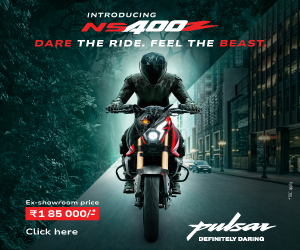 This month we bring you the latest and best helmets in business
This month we bring you the latest and best helmets in business
 |
 |
This month we bring you the latest and best helmets in business
1&2. The Arai
Chaser V Helmet
The Chaser V lid is a highly evolved version of the very popular Chaser helmet. It features a wider visor aperture as compared to the Chaser and a highly sophisticated ventilation system.
It has larger rear vents that help create 50 per cent more vacuum which also aids in improving the overall ventilation. This lid also has larger side vents. The interior is very ergonomic and the design is such that it avoids any pressure points yet it offers a tight and comfortable fit. This lid is priced at about Rs 29,500 and is available through various Websites worldwide.
 3. The Arai 3. The AraiX-TEND Helmet This new lid from Arai’s SZ line features a new outer shell that extends three centimetres to the sides in order to provide enhanced safety. It also features a ‘bumper’ reinforcement at the bottom, which aids in safety. The interior is ergonomically designed to provide high comfort and flexibility. The cheekpads are made from EPS, which provides protection on side impact. Better aerodynamics are achieved as the visor holder is more recessed in the outer shell of this helmet. The lid featured here has RAF (Royal Air Force) livery. You can get one of these for Rs 23,000. Available through various Websites worldwide. |
 4. Furygan Brutale Sport Jacket 4. Furygan Brutale Sport JacketThis cool black leather jacket from Furygan is meant for the riders who like to zip through corners at high speeds. It is made from 1.2-mm cache leather that has been treated to repel water. It features high quality and CE approved removable protectors at the elbows, shoulders and back. The price of the Brutale Sport Jacket is Rs 23,000. More on www.furygan.com |
 |
 |
 |
 |
5. The X-Lite X-802 Lorenzo Replica
Yes, it is true. The official replica of the very same lid that Lorenzo wore to victory has been launched by X-Lite, who supply helmets to Lorenzo and a few other MotoGP riders. This special edition replica helmet has graphics that are exactly the same present on Lorenzo’s lid. It features lettering done up in 1,800 hand-laid Swarovski crystals. The safety parameters are similar to those present on Lorenzo’s GP lid, so forget about how safe this lid is as it has saved Lorenzo’s head whenever he has suffered a crash. However, the biggest feature present on this lid is the price tag – which reads Rs 6 lakh (excluding taxes, duty and shipping)! This replica helmet is available only on order. So start saving, Lorenzo fans!

 Another upgrade for the Hero Honda Hunk
Another upgrade for the Hero Honda Hunk

 The SZ-R is a sporty variant of Yamaha’s latest 150-cc utility bike. Better late than never, says Piyush Sonsale
The SZ-R is a sporty variant of Yamaha’s latest 150-cc utility bike. Better late than never, says Piyush Sonsale

 After countless hours of debate and visits to showrooms, the most eagerly awaited day in your life is here. This is going to be one of the most important purchases of your life and you don’t want to make a mistake. Naturally, because it’s your hard-earned money and post-purchase regrets are expensive.
After countless hours of debate and visits to showrooms, the most eagerly awaited day in your life is here. This is going to be one of the most important purchases of your life and you don’t want to make a mistake. Naturally, because it’s your hard-earned money and post-purchase regrets are expensive. 












 Ever since the VFR1200F has landed, certain questions have been raised and tried to be answered. BIKE India’s Adhish Alawani spent some time in the saddle of Honda’s road tourer. Three days, 1,000 km and almost 100 litres of fuel later, he tries to answer the salient among those questions
Ever since the VFR1200F has landed, certain questions have been raised and tried to be answered. BIKE India’s Adhish Alawani spent some time in the saddle of Honda’s road tourer. Three days, 1,000 km and almost 100 litres of fuel later, he tries to answer the salient among those questions








